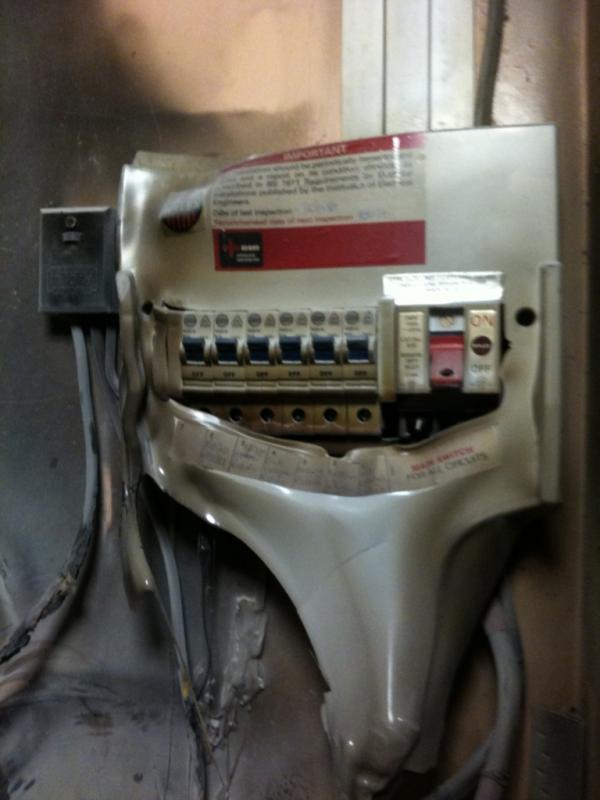Workmate sent me a pic of a burnt storage heaters CU at a house a few days ago. The cupboard where the CU is has little fire damage, lot of smokes in house, happened over early morning. Cause was a loose neutral tail. Sparky also had to replaced main CU ( sit next to storage heaters CU and fire damaged ) and henley block. New CUs moved higher to good, undamaged cables. Electric board replaced meter as well.
Label on burnt CU say last tested 2008.
Good thing they got working smoke alarms.
Label on burnt CU say last tested 2008.
Good thing they got working smoke alarms.



